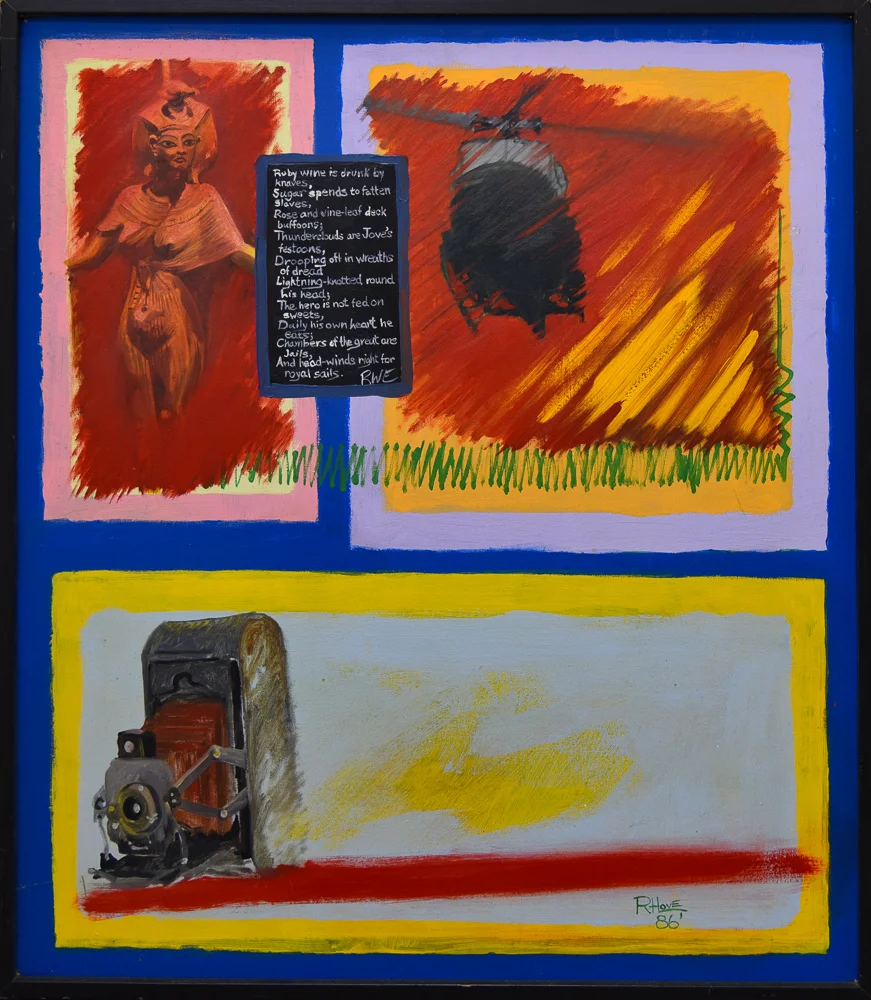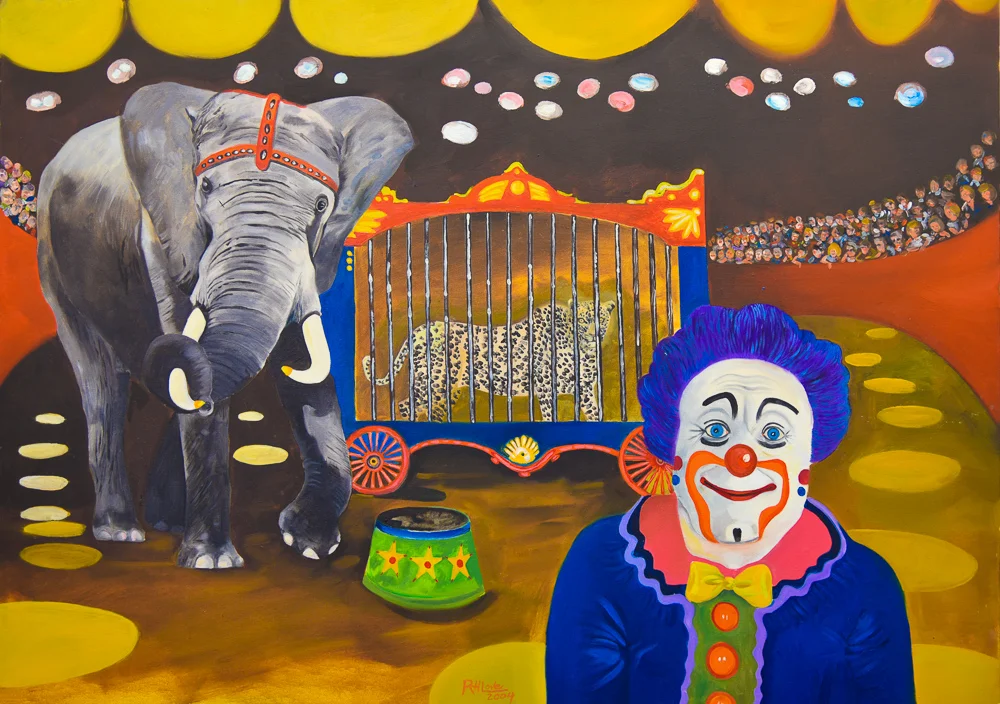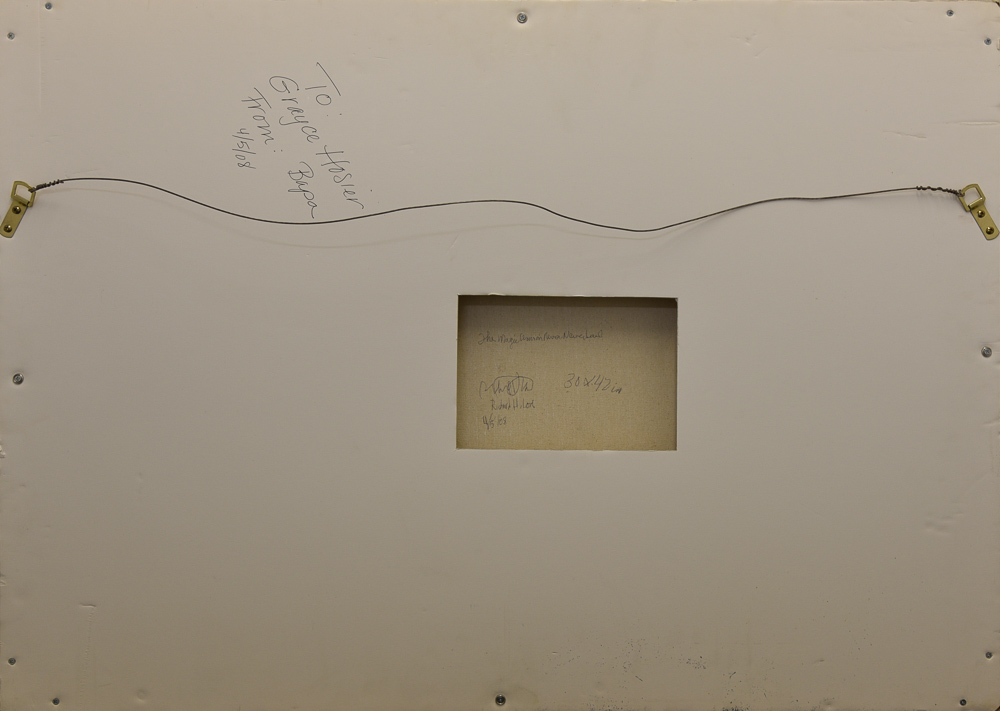Richard H. Love
The Woodstock Years, 2011
Oil on Canvas
48 x 30 Inches
Signed Verso
The Woodstock Years stands symbolically as more than a decade of American social protest and civil disobedience. It was a huge challenge to the democracy and freedom of citizens everywhere who cherished what they thought was indelible and worth martyrdom.
One of our nation's most important socio-cultural influences which is frequently cited in history books as the contribution provided by African Americans in a unique type of music known as Rhythm and Blues. A large number of these creative talents came north from New Orleans, Nashville, Memphis and other more countrified areas but most migrated to big cities such as Chicago, St. Louis and a few other cities. Rising up out of a hitherto ignored music-genre, these 20th-century, down-home entertainer-performers began to find a few who helped promote them and they began recording pieces which were referred to as Jazz. The best-known of these talents was Louis Armstrong who began his fast-moving career in Chicago. Other talents worked diligently for their well-deserved reputations, while a few would even replace Hollywood's stars such as Frank Sinatra, Louis Armstrong, (one of the original New Orleans Jazz musicians), Harry James, Jimmy Dorsey, Bing Crosby and others. Standing in the wings was Lawrence Welk and other well-appreciated bands focusing on traditional songs. Furthermore, as Rhythm and Blues became more popular, it opened the door wide to Bill Haley and the everyday crowd in the form of Rock and Roll. Historians claim that rhythm and blues was the music of African Americans, Indeed if that is true, its beginnings brought an important revolution to both popular music made famous by DJ's on the radio waves and to television. And beginning in 1955, a former truck driver known as Elvis Aaron Presley who, from Nashville, would change popular music in America. The peaceful but silent majority watched their world of calm all but explode into a volatile age punctuated by the various groups demonstrating under the banner of civil disobedience.
Public protest became the spine of a sensitive society which gathered all of its random elements of peaceful protests into one grand celebration of American Commoners at a farm in Woodstock, NY, a former art colony. There was no well-groomed Dick Clark to guide and promote his youthful league of favorites on American Bandstand, only musician-performers whose names would become heroes of the age. When they arrived in February 1962, the musical group known as the Beatles would take popular culture that would eventually take the country by storm. The larger protest which would soon engulf all of the nation was that protest which wanted to interrupt and stop the growing war in Vietnam. In a few words, the so-called Woodstock Years was born out of the self-righteous belief that America needed and was ready for a long overdue change in providing the best living for its people: its ordinary citizens. But of greater consequence was the emergence of a nation-wide Civil Rights movement like none ever witnessed before. In that way, leaders would achieve change without too much bloodshed. Change all that keeps our own from the profits of being free.
It sounded good but the principles were viewed as obnoxious meddling in the affairs of a government that was running smoothly enough already. Moreover, the whole idea of changing status quo was hateful to many whites and ignored by the overruling majority who had never supported any program of liberal operandi. A more acceptable method of change was coming from the organization being organized by John F. Kennedy, et al. They would soon be forced to deal with a Cuban Crisis which was not going to go away quietly. Not far away in purpose was another leader of persecuted citizens, those African Americans guided in their protests by the Reverend Martin Luther King Jr. This undaunted Christian called openly for peace and braved angry crowds in Selma and Birmingham, Alabama - a city which prided itself on being the most segregated city in our United States. These were the famous Woodstock Years.





































































